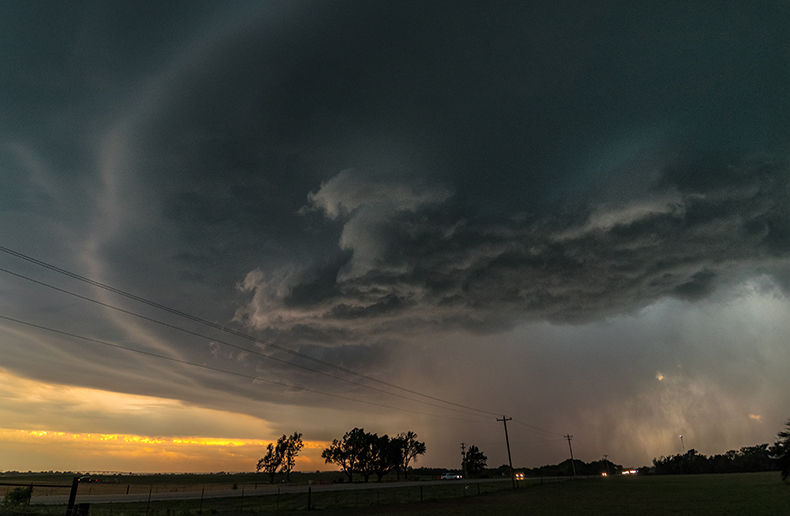Ottawa has prescribed more rigorous rules for segregated fund reserves. Funds with guaranteed withdrawal benefits have responded by putting an emphasis on risk management.
The Office of the Superintendent of Financial Institutions (OSFI) sounded the alarm after the commercial paper and high risk mortgage debacles of 2007, and the liquidity crisis of 2008 was the finishing stroke. The federal regulator is now basing its reserve capital rules on increasingly severe scenarios. All Canadian insurers have been affected, especially Manulife Financial. Forced to increase its segregated fund reserves from $526 million to $5 billion in 2008, the insurer had to issue new shares and debt in order to raise more than $5 billion in capital in 2009.
What’s more, the insurer has been regularly downgraded for its management of market risks in variable annuities, especially in the United States. Manulife has learned from its mistakes. At the beginning of the year, the insurer said that it expects to cover about 60% of its total exposure to market risks by the end of 2012.
“The IncomePlus product is now 100% hedged to market volatility,” says Michael Ondercin, assistant vice president of guaranteed investment products at Manulife. In an interview with The Insurance and Investment Journal, he pointed out that this is in line with OSFI’s new rules, which require insurers to hold greater capital reserves. In 2008 OSFI was already taking a conservative approach with a scenario based on 40% of the worst possible financial results. This is why Manulife was required to raise its reserves to $5 billion in 2008.
To demonstrate their solvency, insurers must simulate more and more catastrophic economic scenarios and demonstrate that they have sufficient reserves to meet them. “These scenarios reflect, amongst other things, the impact of lower interest rates,” adds Mr. Ondercin, who points out that the entire insurance industry is affected by these lower rates. This factor, combined with market volatility and the impact of new accounting standards, are making it more expensive to cover risks, says Mr. Ondercin. Manulife has a dynamic hedging strategy where it makes use of various financial instruments.
Having come into the market at the end of 2008, SSQ Investment and Retirement has made few changes to its product up until now. However, the insurer did put a hedging program into place at the beginning of the year, says Marc Trépanier, vice-president of business development at SSQ. “The program ensures the sustainability of the product, one that has still only increased its fees by 0.15%. What’s more, we are one of the only insurers to have maintained its guaranteed minimum withdrawal,” explains Mr. Trépanier. SSQ’s Astra Guaranteed Income II product currently offers a 20 year guaranteed withdrawal benefit.
Desjardins Financial Security (DFS) was one of the first to cut back its guaranteed minimum withdrawal benefit to a lifetime withdrawal benefit, and it also began a hedging program 18 months ago. “It is a hedging program where we cover our Canadian equity funds by taking a position that is opposite to that of the S&P/TSX60 [the Toronto Stock Exchange index],” explains Alain Bédard, vice-president of individual insurance and savings at DFS.
To protect itself against the rise and fall of the TSX, DFS managers purchase derivatives such buy or put options on the index. Is it expensive? “The price of this type of coverage depends on the current volatility,” says Mr. Bedard.
The cost can also vary depending on the amount of business to be covered. “The insurer may choose to cover only in-force, only new business, or both,” says Mr Bédard. “We decided to cover both in full.” He adds, however, that a program can never cover 100% of the risks. “To achieve this, we would need to hedge our positions every day. We tend to hedge against the maxiumum risk.”
Mr. Bédard also believes that the increased capital requirements for segregated funds, combined with new accounting standards and low interest rates, will result in a new wave of changes to guaranteed minimum withdrawal benefit products.
Sun Life continues to hedge their segregated fund products as they did, effectively, throughout the financial crisis. According to the insurer’s 2010 annual report, these cover both activities and products, as well as the company itself. Brian Taylor, vice-president of individual wealth management , says that Sun Life uses swaps and interest rate options for this coverage. Sun Life hedges all of their segregated fund contracts, and the insurer’s exposure to declining equity markets is reduced by 55% to 65%. The programs cover the fair value of expected future net claims costs, and a part of the fees tied to segregated fund contracts.
However, Mr. Taylor points out that this kind of hedging program does not eliminate every variation. “It still results in some accounting volatility, because Sun Life’s reserves provide a provision for adverse deviations to be held, and that provision results in a reserve having more volatility than the expected value,” he explains. “That’s the essential reason why we still show an income impact, due to the equity market going up and down, even with the hedging program.”
But without the hedging program, the impact on financial results could have been a lot worse. Mr. Taylor says that Sun Life’s hedging program benefits represent $1.4 billion that, otherwise, would have been income losses between 2008 and 2009. “The $12.5 billion of assets under management is a representation of all the guarantees which stand behind our seg funds products,” he says.
Alain Thériault






